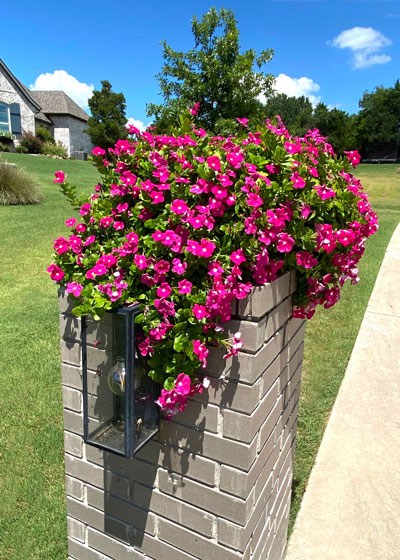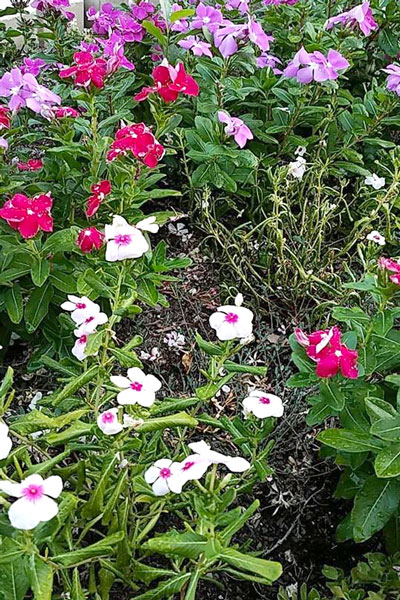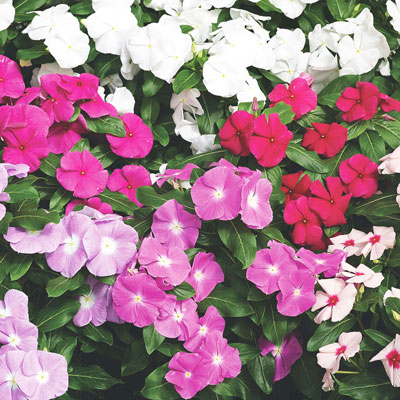Cora® Cascade Violet Vinca
Lynn and I had been out for a pizza (curbside in our car). Not the most glamorous way to eat out, but we’ve not gone into a restaurant since March.
On the way home she wanted to show me a couple of new houses, so we drove down one of our favorite rural streets. That’s when I saw this gorgeous mailbox post and light standard along a driveway. Planted in its top was a stunning vinca, otherwise known by us oldtimers as periwinkle.

There was a time when periwinkles were the most popular summer flower across all of Texas. Goodness knows they handle our heat, and that’s what we specialize in late May through mid-September. We grew them for their white, pink, rosy-red and two-toned flowers borne by the scores. We even let them reseed in our gardens.

Then, somewhere along the line back in the 70s or 80s, they began to fall victim to a horrible disease that caused them to wither and fade. Their stems looked like someone had pressed a hot knife up against them. The leaves wilted and soon the plants died. It moved through the beds and discouraged us from ever planting them again. The disease is called aerial Phytophthora fungus, and it’s in the class known as “water mold funguses,” spread by splashing water of rainfall and irrigation.

Plant breeders got busy, and a highly resistant strain was introduced known as the Cora® series. They came in a nice array of colors and all went very well for a decade or more. They were even tested and selected as Texas Superstar® Plants by Texas A&M.
But in recent years, even Cora periwinkles have been hit with a mutated variant of the fungus, making it all the more important that we take care with our plantings:
• Stay with Cora or other types known to be resistant to the fungus.
• Plant only in full sun.
• Plant in raised beds of loose, well-draining soils.
• Growing your vincas in large pots is especially good, as it ensures good drainage.
• Buy plants from a reputable nursery, and be sure the transplants are healthy and vigorous at the time that you buy them. Take them home and plant them immediately.
• Plant no sooner than late May or June, once the danger of heavy spring rains has lessened. It’s fine (if not better) to plant well into the summer. They can handle the heat.
• Avoid overhead irrigation as much as possible.

And now, a new and improved Cora comes into the market. It’s labeled as Cora® XDR, and the information from the seed producer says that it’s “Highly resistant to 10 of the most virulent isolates of Phytophthora nicotianae that cause Phytopthora blight on annual vinca.” It’s available as a mix of a dozen or more colors in a compatible blend. Most of what you’ve been seeing in the upright Cora series in 2020 has been these XDR types.
